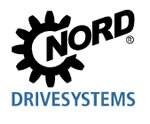Why STEM needs fresh ideas to bring about the fourth Industrial Revolution
T3D Smartphone 3D Printer Successfully Funded on Kickstarter
Carbon Introduces Production-Scale 3D Printing Materials Program for Large Manufacturers
How Machine Learning Will Unlock The Future Of 3D Printing
Okuma introduces smart factory solution
Finnish micro-factory highlights path to business success
TRUMPF's 'smart factory' is a factory and showroom in one
Will Voxeljet's High Speed Sintering Reinvent 3D Printing?
Europe looks at 3D printing to pursue its industrial renaissance
What does Industry 4.0 mean for the future of logistics?
Siemens and HP partner to advance 3D printing for product development and industrial production
Huawei advances its Smart Factory push with 5G-based Robot as a Service
5 ways to advance robotics in manufacturing
Introducing Myriad X: Unleashing AI at the Edge
IIoT Deployments to Double: Manufacturers Reinvent Themselves with New Technologies
Records 886 to 900 of 1282
First | Previous | Next | Last
Featured Product

MRPeasy - ERP for Small Manufacturers That Delivers Results
Manufacturing and Automation - Featured Company

